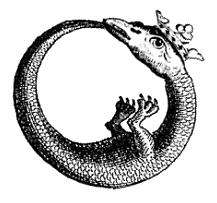Process Aesthetics, or, The Aesthetics of Process
Originally Posted on Circle4
At this summer’s seminar we would like to focus on process and the role of process within the field of aesthetics. Papers can be on the theory or theorization of process, methodological questions regarding process and aesthetics, or analytical approaches to works or objects with emphasis on process.
According to A.N. Whitehead, the world consists of events or happenings rather than solid permanent objects. Nothing comes into being once and for all. Objects can only persist insofar they renew or recreate themselves in an infinite process. “The community of actual things is an organism; but it is not a static organism. It is an incompletion in process of production. Thus the expansion of the universe in respect to actual things is the first meaning of ‘process’; and the universe in any stage of its expansion is the first meaning of ‘organism’. In this sense, an organism is a nexus.” (Process and Reality, p. 214-15). To Whitehead there is no ontological difference between physical objects and mental or subjective acts. There is no essential distinction between mind and matter, subject and object, human and non-human, living and non-living. All pertains to the same process. “Secondly, each actual entity is itself only describable as an organic process. It repeats in microcosm what the universe is in macrocosm.
For the rest: --> CFP: Process Aesthetics, or, The Aesthetics of Process - First draft
 Knud Thomsen has put a draft paper (pdf) describing his ‘Ouroboros Model’ - an architecture for cognitive agents - online. It’s a resonant title at least - as you may know, Ouroboros is the ‘tail-eater’; the mythical or symbolic serpent which swallows its own tail, and in alchemy and elsewhere symbolises circularity and self-reference.
Knud Thomsen has put a draft paper (pdf) describing his ‘Ouroboros Model’ - an architecture for cognitive agents - online. It’s a resonant title at least - as you may know, Ouroboros is the ‘tail-eater’; the mythical or symbolic serpent which swallows its own tail, and in alchemy and elsewhere symbolises circularity and self-reference.We should expect some deep and esoteric revelations, then; but in fact Thomsen’s model seems quite practical and unmystical. At its base are schemata, which are learnt patterns of neuron firing, but they are also evidently to be understood as embodying scripts or patterns of expectations. I take them to be somewhat similar to Roger Schank’s scripts, or Marvin Minsky’s frames. Thomsen gives the example of a lady in a fur coat; when such a person enters our mind, the relevant schema is triggered and suggests various other details - that the lady will have shoes (for that matter, indeed, that she will have feet). The schemata are flexible and can be combined to build up more complex structures.
In fact, although he doesn’t put it quite like this, Thomsen’s model assumes that each mind has in effect a single grand overall schema unrolling within it. As new schemas are triggered by sensory input, they are tested for compatibility with the others in the current grand structure through a process Thomsen calls consumption analysis. Thomsen sees this as a two-stage process - acquisition, evaluation, acquisition, evaluation. He seems to believe in an actual chronological cycle which starts and stops, but it seems to me more plausible to see the different phases as proceeding concurrently for different schemata in a multi-threaded kind of way. (Emphasis mine, what it feels like to me to write a novel. )
Read the rest HERE
No comments:
Post a Comment